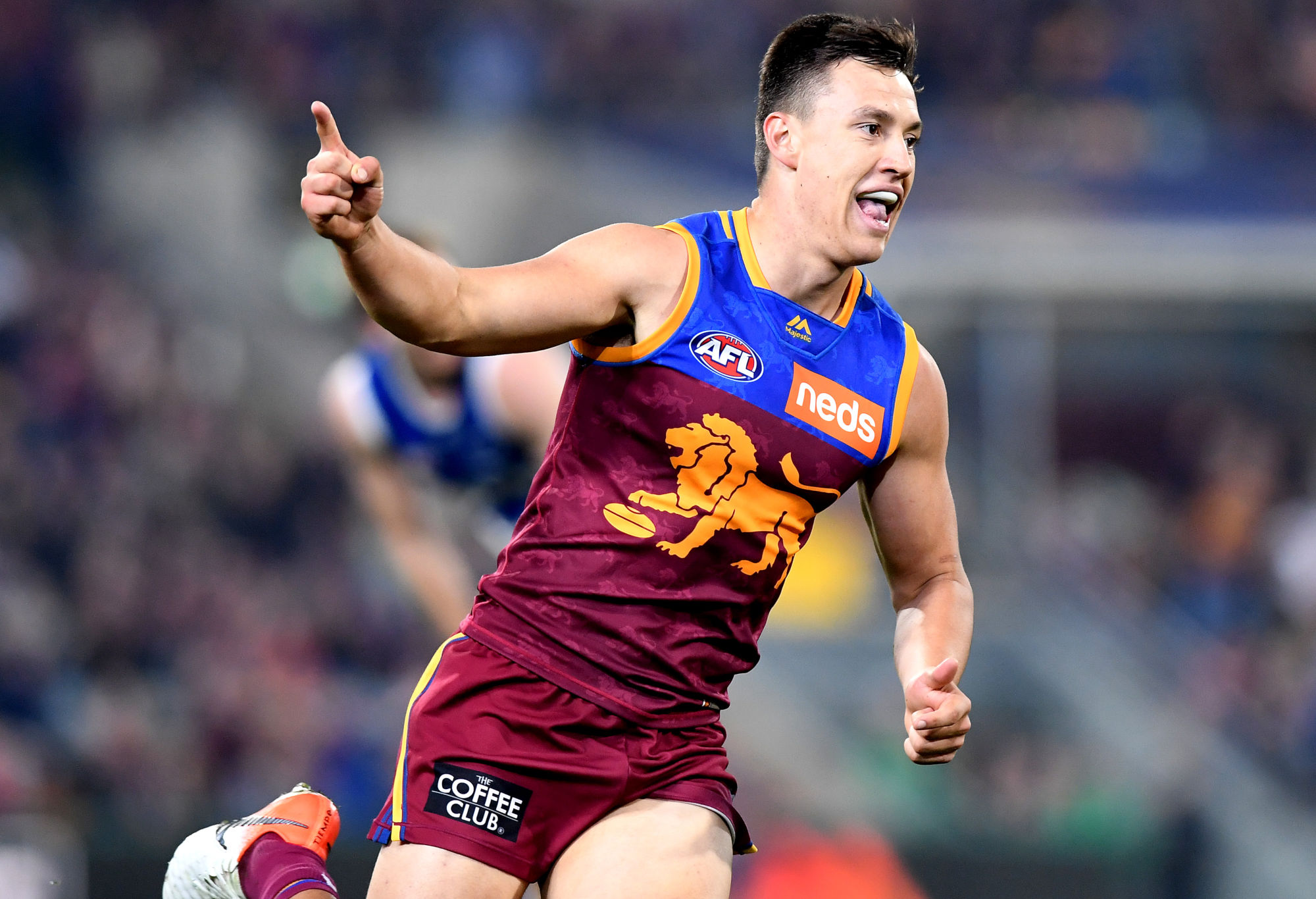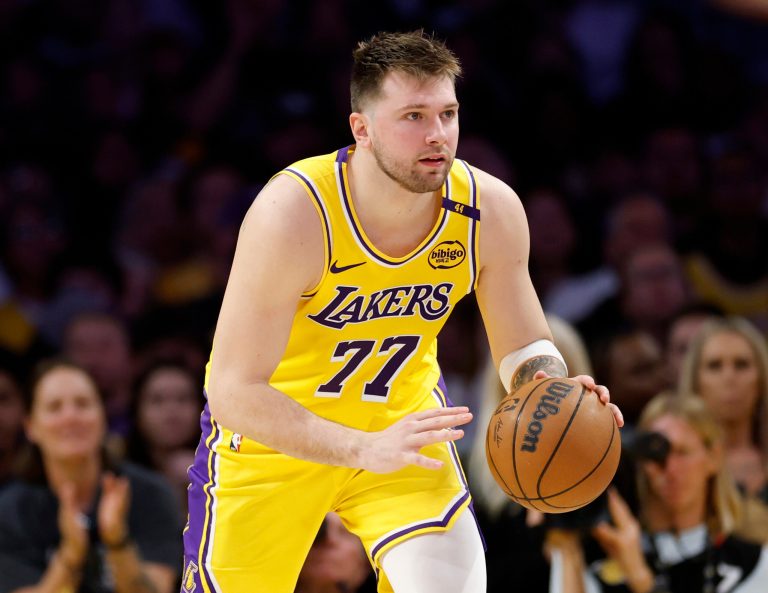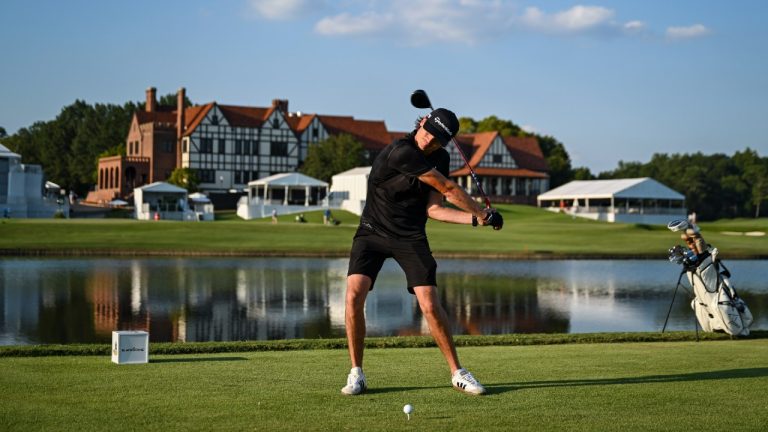It’s that time of year again: the winter chill has set in, the electrical fires are roaring, and all over the nation, footy fans are getting out their notepad and paper (or laptop computer) and jotting down their mid-season All-Australian teams.
Who’s been the best key defender named Sam of the year: Taylor or Collins? How many ruckmen is too many ruckmen? Is Ben King worth a spot with the second-most goals in the AFL even if that’s literally all he does? All important questions that need answering.
After weeks of painstaking research, giving full consideration to every player who has run onto an AFL field this season, I have arrived at my team: the cream of the cream of the first half of the year.
So without further ado, here is my full All Australian 23 (yes, I’ve even named a sub!) after 12 rounds of the 2025 season – exactly midway, give or taken an Opening Rounds – along with a few honourable mentions who just missed the cut.
Disagree with a pick? Feel free to vent your frustration in the comments section – though make sure to abide by the rule that any player you want to put in also needs someone taken out in their place.
Backs: Nick Vlastuin (Richmond), Sam Taylor (GWS), Callum Wilkie (St Kilda)
Half-backs: Nasiah Wanganeen-Milera (St Kilda), Sam Collins (Gold Coast), Dayne Zorko (Brisbane)
The hardest group to pick in any prospective All-Australian team is always the defenders, because so much of what they do is tricky to quantify in the stats.
Some things, though, stand out: GWS’ Sam Taylor, the premier key back in the game in many good judges’ books, has lost just three of 38 contested one-on-ones in defence, the best rate of anyone in the top 25 for attending them.
Combine that with having 13 more intercept marks than anyone else in the league, and he couldn’t be a bigger lock at full back for his second career blazer.
Not far behind him is Gold Coast’s premier stopper Sam Collins: the two-time best and fairest winner narrowly missed out on a maiden All-Australian berth last year, and has taken his game to new heights in 2025 along with his finals-bound team.
Ranking among the game’s elite for spoils and intercept marks, he is the lynchpin around which the entire Suns’ backline operates, and I’d feel a whole lot safer with him in my team.
I’ve also chosen a third key defender; call it recency bias, but Callum Wilkie’s form in the past fortnight in particular makes him Taylor’s primary challenger as the best key defender in the game, and has seen him leapfrog over early-season locks Jacob Weitering and Harris Andrews.
The picture of consistency, Wilkie hasn’t missed a St Kilda game since his debut six years ago, rivals Taylor for impassability in one-on-one situations, reads the play beautifully, and is now even starting to receive attention from defensive forwards trying to curb his influence – which in the case of Melbourne and Jake Melksham on the weekend, failed dismally.
I’m a sucker for outstanding players in bad teams, and Richmond would be a whole lot worse without Nick Vlastuin as a firm hand down back keeping a young, inexperienced side well organised and disciplined.
The Tigers have already surpassed the expectations of many with three wins for the season; in their stunning upset of Gold Coast in particular, Vlastuin was quite easily best afield, intercepting everything across half-back and kick-starting many a yellow and black rebound for a famous victory. He’d go close to making my team on that game alone, but fortunately the rest of his season has been very nearly as good, and I’m staggered to see so few other experts even considering him for a spot in their All-Australian teams.

(Photo by Darrian Traynor/Getty Images)
There are four main contenders for the two rebounding half-back spots, and I’ve gone with Nasiah Wanganeen-Milera and Dayne Zorko just edging out Lachie Ash and Bailey Dale.
Why? Well, Zorko’s calm ball use, experience and willingness to bite off the difficult kick is so pivotal for Brisbane, and a key reason why they’re among the main premiership contenders yet again. He’s more damaging with ball in hand than the more prolific Ash, whose remarkable numbers bely the fact that his Giants have struggled all year to get the Sherrin from one end to the other.
Wanganeen-Milera versus Dale was a tougher contest, but the young Saint has been more consistently excellent across the season in my view, whereas the Bulldogs gun’s numbers are enhanced by some remarkable individual games, including 49 disposals against Essendon. Wanganeen-Milera’s seven goals for the season, an outstanding number for any backman, doesn’t hurt his case either, and nor does the immediacy of his stunning performance against the Demons just days ago.
Honourable mentions: Lachie Ash (GWS), Bailey Dale (Western Bulldogs), Jacob Weitering (Carlton), Harris Andrews (Brisbane), Rory Lobb (Western Bulldogs)
Centres: Zach Merrett (Essendon, vice-captain), Caleb Serong (Fremantle), Ed Richards (Western Bulldogs)
Followers: Max Gawn (Melbourne, captain), Bailey Smith (Geelong), Noah Anderson (Gold Coast)
Interchange: Hugh McCluggage (Brisbane), Nick Daicos (Collingwood), Darcy Cameron (Collingwood), Andrew Brayshaw (Fremantle)
Substitute: Tom Liberatore (Western Bulldogs)
Nearly always, the All-Australian selectors plump for as many midfielders as possible in their final team, filling up the bench with them and even plonking them onto the half-forward flanks.
And you know what? I understand why – the fact of the matter is that in modern footy, the best players are uniformly where the ball is most.
Debate around the best ruckman in the league has been growing strong all year long, with Darcy Cameron, Tristan Xerri and Tom De Koning all staking their claims at one point or another.
But I’m sorry – anyone that doesn’t still have Max Gawn as the AFL’s premier big man is kidding themselves in my view.
Gawn remains as he has been for the better part of a decade: a colossus. Marking everything he gets his hands to around the ground, the captain has remained inspirational in a Melbourne outfit that has lost much of its lustre in recent years, and he has been a huge part of their turnaround from a 0-5 start.
Lowering his colours to Xerri in Round 2 led to talk of a changing of the guard, but since then, Gawn has been leaps and bounds ahead of his North Melbourne counterpart, whose strengths as a bullocking, clearance-winning, big-tackling behemoth aren’t quite what I look for in a modern ruckman.
That’s why I don’t have Xerri in my team at all; instead, Darcy Cameron is my second ruck in the team. Why? Well, Cameron is the best intercept-marking ruckman in the game by a street: sitting a kick behind the ball, his presence in the air has foiled many an attacking thrust from the opposition, and has been nothing short of pivotal to Collingwood’s superb start to the season. Across the year, he has edged clear of Tom De Koning, whose white-hot start has tapered of late.
As for the proper midfielders, it’s a mix of old and new – and yes, I have cheated by naming on-ballers on the wings. Like with most years, there has been no outstanding wingman in 2025 worthy of a spot on his own, with Ollie Dempsey from Geelong probably the closest given his penchant for multiple goals a game.
Zach Merrett was always being picked, having yet again been a dominant force for Essendon this year, and a stint at half-back against Brisbane last week is good enough for me to shift him to a wing.
Over on the other wing is a newcomer in Ed Richards; another lock as the best score assist and score involvements player in the league this year (both by some distance), his relatively small centre bounce numbers justify having him out there in my book.
Bailey Smith could easily have been one of the wingmen, but instead he’s right in the guts, where he has been all year for Geelong. Questions about his kicking can get in the bin: his tireless running and explosive pace from stoppages are perfectly suited to a Cats team that lacked line-breaking on-ballers, and with a forward line as dangerous as theirs and so many elite kicks around him, having a guy that can gain 100 metres in one go with run and carry and a long kick forward is invaluable.
As the number one clearance-winner in the league, Caleb Serong is another lock in midfield, and edges out the likes of Matt Rowell and Lachie Neale for the in-and-under contested footy beast in my team: meanwhile, the silky-smooth moves of Noah Anderson, who wins a stack of the ball every week and rarely wastes it, make him a proper Brownlow Medal smoky that no one is talking about in my eyes.
The bench, like most years, is chock-full of mids I couldn’t squeeze into the starting team but had to pick anyway. Nick Daicos hasn’t been as good in 2025 as last year or even 2023, but he’s still leaps and bounds ahead of most players in the competition; while Andrew Brayshaw’s gut-running, desperate tackling and insane courage have made him just as pivotal as Serong to their recent form turnaround, and rewarding him with selection in this team is nearly a given.
It’s a travesty that Hugh McCluggage has never made an All-Australian team before despite multiple selections in the original squad, and this year will surely be his breakthrough.
Outstanding yet again all season long as the outside complement to Neale and Josh Dunkley’s hard-nosed clearance wins, a dominant display to single-handedly drag Brisbane to victory over Essendon was ideal timing for mid-season All-Australian selection; and frankly, the narrative that will continue to develop this year that he has never been selected before will surely get him in even if his form does taper. We’ve seen that happen many times before.
As for the sub, I couldn’t pass up Tom Liberatore: he hasn’t been quite as dominant since Marcus Bontempelli’s return from injury, but the Bulldogs veteran is still a clearance king with the fastest hands in the game who rarely wastes a possession. Like McCluggage, a maiden All-Australian berth would be long overdue if he finally receives a blazer in September.
Honourable mentions: Tristan Xerri (North Melbourne), Matt Rowell (Gold Coast), George Hewett (Carlton), Lachie Neale (Brisbane), Tom De Koning (Carlton).

Hugh McCluggage (Photo by Bradley Kanaris/AFL Photos via Getty Images )
Half-forwards: Izak Rankine (Adelaide), Jeremy Cameron (Geelong), Jordan Dawson (Adelaide)
Forwards: Jamie Elliott (Collingwood), Riley Thilthorpe (Adelaide), Kysaiah Pickett (Melbourne)
I’ve half-cheated when it comes to assembling my forward line, because three of the six players here attend more centre bounces than not for their teams.
But of them, only one I would argue is not a genuine forward: and not only is Jordan Dawson arguably the best player in the competition this year, but has spent enough time in attack, especially recently, to pick him on a half-forward flank, home of goalkicking midfielders like Marcus Bontempelli and Christian Petracca for years.
There’s not a single thing Dawson isn’t wonderful at: one of the best kicks in the league, damaging overhead and an exceptional leader, he’s the best player in an Adelaide team chock full of talent. Matthew Nicks’ willingness to use him for long stints up forward hasn’t compromised his effectiveness, either, with seven goals in the last five weeks.
Dawson is one of three Crows in my forward line, appropriate considering only the Western Bulldogs have scored more points this year.
Izak Rankine is averaging a career-high 22.5 disposals a game as he transitions to a near full-time midfield role, and so lethal is he that the Crows are just fine covering for him defensively to let him spit forward at every opportunity. A nightmare for opposition defences, he remains a threat in front of goals with 14 majors for the year to date – but his creativity, agility and raw pace around stoppages make him now just as deadly getting the ball inside 50 as he has always been when the footy hits the ground in there.
He’s not in Coleman Medal contention anymore, nor is he even the leading goalkicker at the Crows, but it’s hard to go past Riley Thilthorpe as 2025’s premier forward so far this year. An absolute monster, he’s the toughest one-on-one battle in attack in the AFL, deceptively quick on the lead, and in addition to kicking goals sets up more than his fair share too, with 14 goal assists three more than any other key forward this year, and equal-third in the league.
If Thilthorpe isn’t the best key forward this year, then it’s Jeremy Cameron: once again, the Geelong star looks on course for a fifth All-Australian blazer, and third in the last four years. He has a staggering 18 goals in the past three weeks to shoot to the top of the Coleman Medal leaderboard, and unlike Ben King kicking goals is far from the limit of his influence.
The best small forward in the game in 2025 is more clear cut: it’s Jamie Elliott, plain and simple. So stunning is his form that Craig McRae has remodelled the Pies’ set-up inside 50 to give him all the space he needs, and he’s either too smart, too quick, or both for just about every opponent he has come up against.
With 33 goals for the year, only Cameron heads him for the Coleman Medal – extraordinary for a small forward. His penchant for big bags and top-six ranking for score involvements this year easily gets him the nod over Jack Higgins, who has been nearly his equal for menace near goals but doesn’t do nearly as much in other facets.
The final forward spot was the toughest of all, and I could have gone in many directions: another forward-midfielder like Touk Miller, a goalsneak like Higgins, or one of Ben King or Jesse Hogan as another key forward.
Instead, I’ve gone with Kysaiah Pickett – despite him missing the first three games of the year due to suspension.

Kysaiah Pickett celebrates a goal. (Photo by Jonathan DiMaggio/AFL Photos/via Getty Images)
It’s no coincidence that Melbourne’s form has turned around since having Kozzie available; playing a new role as an inside midfielder who dashes forward at every opportunity, no one had been able to stop him before Marcus Windhager sat on him for the entirety of St Kilda’s big win in Alice Springs.
Winning more of the ball than ever before, Pickett is in the Rankine camp of now having even more influence as a midfielder than he did as a forward only; but he’s kicking more goals than the Crows star, too.
His twin five-goal hauls against Fremantle and Sydney are, in my book, two of the best five individual games played by anyone this season: both times, it felt like every time the ball went in his direction something good was going to happen for Melbourne, and then it came true.
Stiffest of all to miss is probably Patrick Dangerfield, whose absence for the last two weeks (and most of the previous round through injury, too) has undercut his staggeringly good start to the year in a new role stationed primarily up forward.
When he returns, if he can get back to the same form, he’s all but a lock for a record ninth All-Australian blazer – but at this moment, I just can’t squeeze him in.
Honourable mentions: Jesse Hogan (GWS), Touk Miller (Gold Coast), Jack Higgins (St Kilda), Ben King (Gold Coast), Patrick Dangerfield (Geelong).







